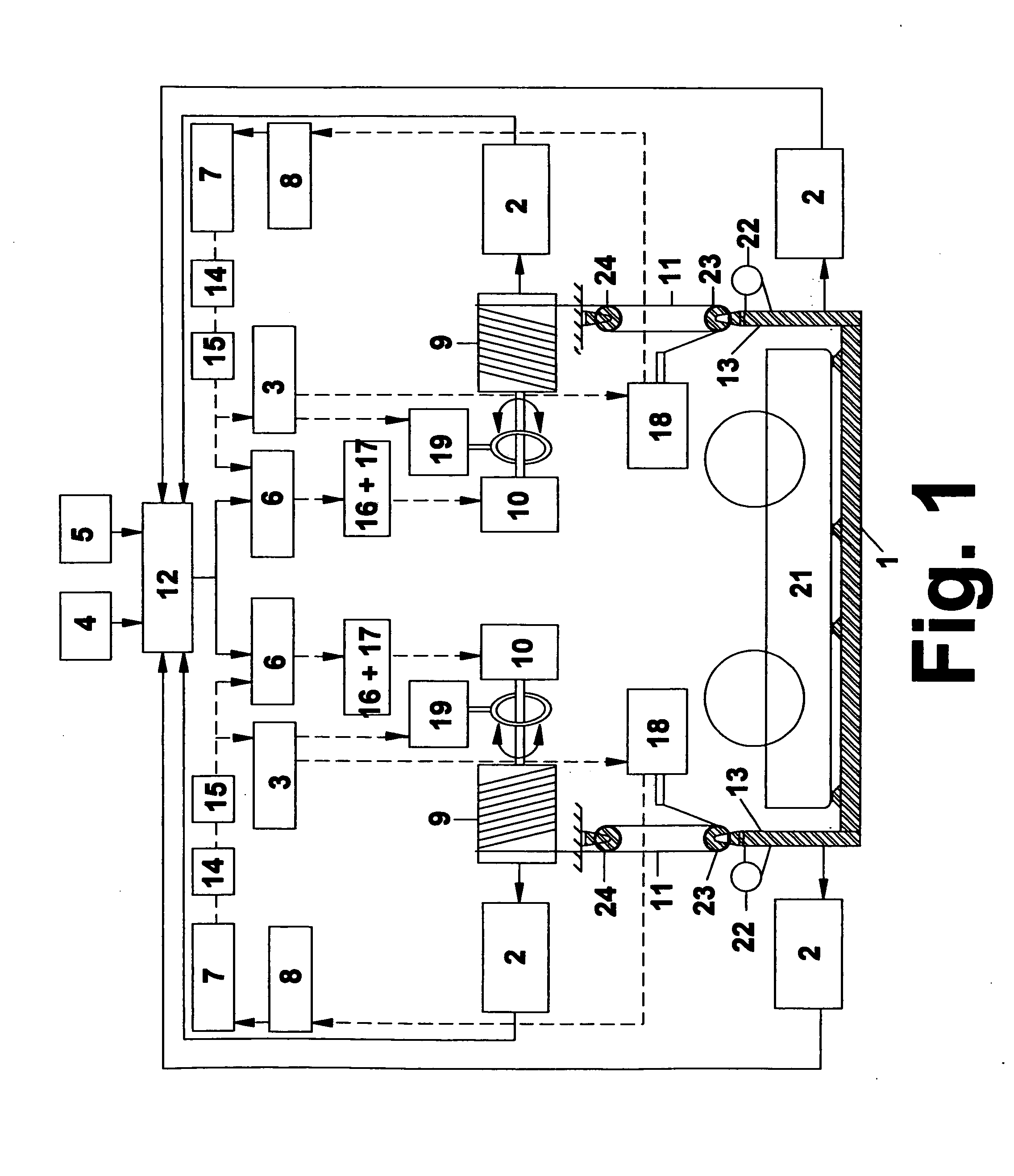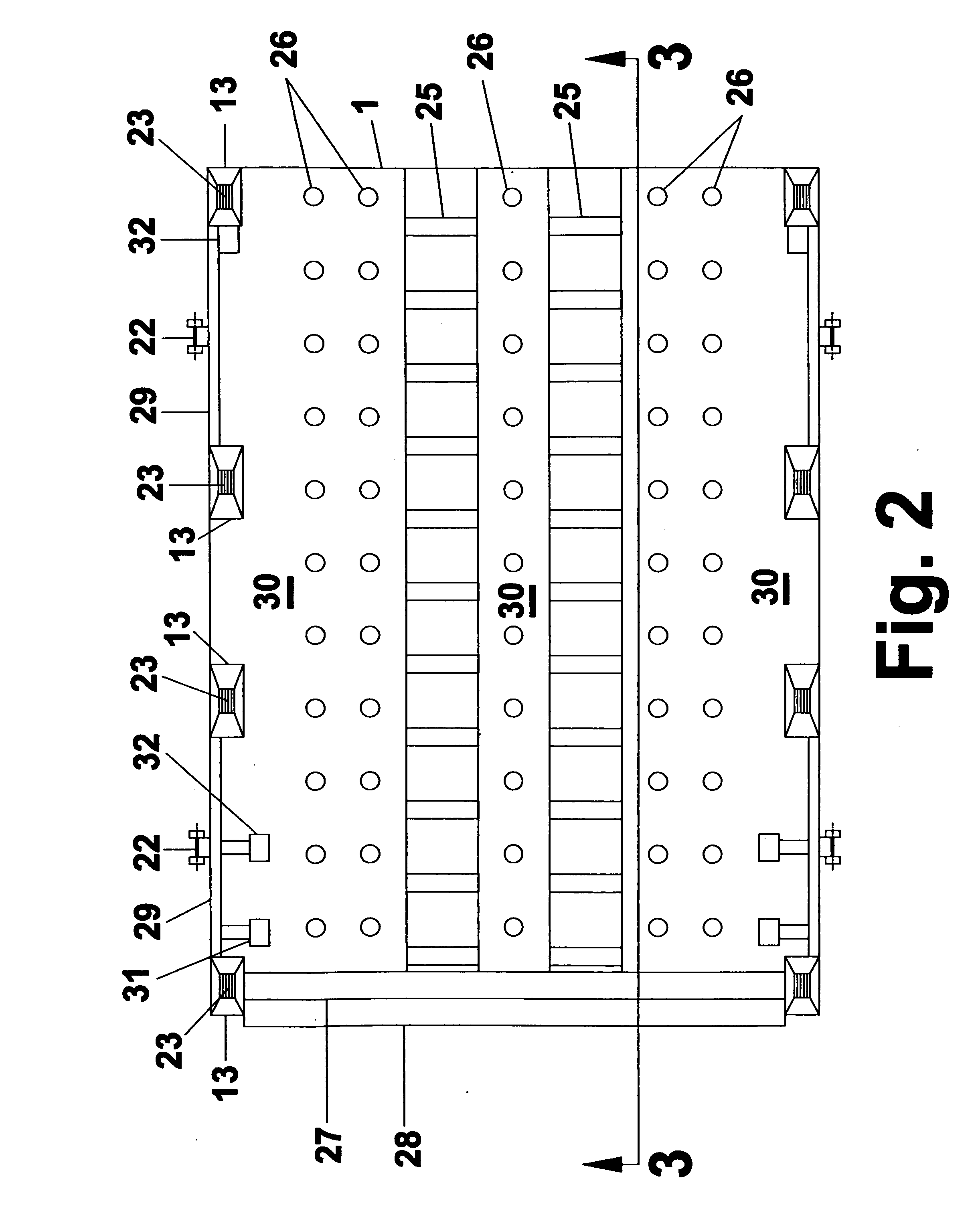LCAC lander, launcher and lifter
a technology of lcac lander and launcher, which is applied in the field of naval vessels, can solve the problems of inordinate overhead of thousands of on-board naval personnel, inability to ferry lcacs to a theater of operations, and many discernible naval limitations in deployment and retrieval of lcacs, and achieves rapid increase and distribution of flooding waters.
- Summary
- Abstract
- Description
- Claims
- Application Information
AI Technical Summary
Benefits of technology
Problems solved by technology
Method used
Image
Examples
Embodiment Construction
[0074]The L4 system for recovery comprises four LCAC positioning winches 32, as necessary LCAC line retrieving winches, an LCAC elevator platform 1, and LCAC stowage fittings and restraining devices on the platform itself.
[0075]The dockmaster supervises the LCAC 21 landing and take-off through communication with various operators, LCAC crew, and line handlers by means of an announcing system. Red, green, and amber traffic lights visible to the approaching LCACs are located on the stems of the port 52b and starboard 52a cantilevers. These traffic lights are controlled from the L4 system control command station 44 located on the main deck 57 within one of the cantilevers. LCACs 21 are able to be carried by the platform 1 when it is in the “at sea” stowed position. Though single LCAC lifting capacity is normal, if the smaller units present themselves and can be secured, then a multiple lift is possible providing weight limits are not exceeded.
[0076]FIG. 1 presents a notional schematic ...
PUM
 Login to View More
Login to View More Abstract
Description
Claims
Application Information
 Login to View More
Login to View More - R&D
- Intellectual Property
- Life Sciences
- Materials
- Tech Scout
- Unparalleled Data Quality
- Higher Quality Content
- 60% Fewer Hallucinations
Browse by: Latest US Patents, China's latest patents, Technical Efficacy Thesaurus, Application Domain, Technology Topic, Popular Technical Reports.
© 2025 PatSnap. All rights reserved.Legal|Privacy policy|Modern Slavery Act Transparency Statement|Sitemap|About US| Contact US: help@patsnap.com



